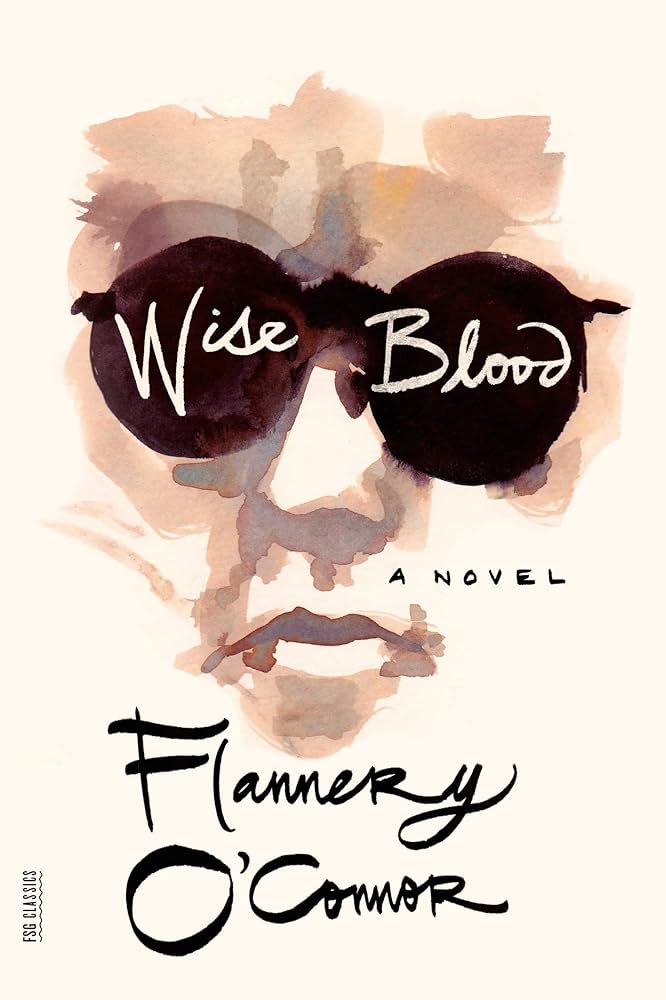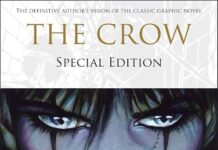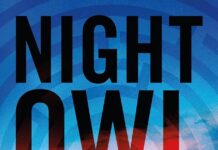In the labyrinthine world of Flannery O’Connor’s Wise blood, faith and doubt collide with unsettling intensity, weaving a narrative that is as provocative as it is perplexing. takes readers on an insightful journey through the novel’s complex interplay of grace, redemption, and human fallibility. This review navigates the shadows and contradictions that define O’Connor’s storytelling, inviting readers to reconsider the sacred and the profane in a world were spiritual certainty is anything but assured.
Unpacking the Layers of Spiritual Irony in Wise Blood and Its Impact on Contemporary literary Thought

Flannery O’Connor’s narrative deftly interweaves layers of spiritual irony that challenge conventional perceptions of faith and redemption. At its core, the novel exposes the tension between self-righteousness and genuine grace, using grotesque characters who embody contradictions and paradoxes. These figures are less about black-and-white morality and more about the complex human struggle to reconcile spiritual longing with earthly confusion. The irony becomes a lens, magnifying the absurdities found in the attempt to “be wise” in a world where divine truth is often hidden beneath the surface of human folly.
The impact of these spiritual ironies extends beyond the text, influencing contemporary literary thought by encouraging readers and critics alike to explore how faith and skepticism coexist within narrative frameworks. This complexity invites a more nuanced dialogue in the study of modern Southern Gothic literature, where the juxtaposition of sacred themes and dark humor challenges readers to rethink spiritual authenticity. Key elements driving this conversation include:
- Ambivalence of belief: Characters oscillate between doubt and conviction, reflecting realistic spiritual dilemmas.
- Subversion of Traditional Redemption: O’Connor redefines salvation, frequently enough presenting it through violent or unsettling epiphanies.
- Symbolic Irony: Objects and actions in the narrative carry dual meanings that complicate moral interpretations.
| Literary Element | Ironical Function | Contemporary Impact |
|---|---|---|
| Characterization | Embodies paradoxical faith | Inspires multifaceted character studies |
| Plot Structure | Highlights spiritual dissonance | Encourages nonlinear narrative recognition |
| Symbolism | Conveys layered meanings | Advances deep thematic analysis |
Exploring Flannery O’Connor’s Complex Portrayal of faith and Doubt in a Secular World
In the heart of Flannery O’Connor’s narrative lies a nuanced dance between belief and skepticism, where faith is neither sanctified nor dismissed but rather exposed in its raw, often contradictory form. She masterfully crafts characters whose spiritual quests unfold amid a landscape that is distinctly secular and, at times, antagonistic to religious conviction. This juxtaposition serves not only to challenge conventional piety but also to illuminate the paradoxes that accompany genuine spiritual searching. Through this tension, O’Connor refuses to offer easy answers, rather inviting readers to grapple with the unsettling coexistence of grace and doubt that permeates her work.
Her portrayal can be explored through key thematic elements that reveal the complexity of her approach:
- Irony as a Spiritual Lens – O’Connor uses irony not merely as a literary device but as a means of exposing the gaps between human understanding and divine intention.
- Brokenness and Redemption - Characters often embody both moral failure and the potential for spiritual awakening, reflecting a world where salvation is elusive yet persistently sought.
- Secular Skepticism vs. Sacred Mystery – The tension between a rational, secular worldview and the mysterious nature of faith is a constant undercurrent, highlighting the fragility and resilience of belief.
| Aspect | Representation in Wise Blood |
|---|---|
| Faith | Complex, often conflicted |
| Doubt | Persistent, shaping character arcs |
| Surroundings | Secular, indifferent |
| Outcome | Ambiguous, thought-provoking |
How Symbolism and Paradox Shape the Moral Landscape of Wise Blood’s Narrative
Flannery O’Connor’s Wise Blood weaves a rich tapestry of symbols that invite readers to delve beyond surface interpretations. The protagonist, Hazel Motes, embodies a paradoxical crusade-devoutly denying faith while being inescapably bound to spiritual questions. Objects like the “wise blood” itself serve as cryptic signposts; the murky metaphor of inherited knowledge pulses beneath Hazel’s defiant exterior, challenging us to confront the contradictions embedded within human nature. O’connor’s clever use of nature and religious iconography creates tension, reflecting a world where clarity is elusive and truth often wears the mask of irony.
Through paradox, the narrative sharply critiques not only religious fervor but also the existential isolation of believing and disbelieving simultaneously. Consider this dynamic:
| Symbol | Paradoxical Meaning |
|---|---|
| The Blind man | Sees spiritual truth but is physically sightless |
| Hazel’s Anti-Church | Rejects faith but creates religious fervor |
| The “Wise Blood” | innate knowledge that both enlightens and condemns |
These contradictions are not merely literary devices but pivotal in crafting a moral landscape that grapples with the messy realities of redemption, sin, and self-awareness. O’Connor resists simplistic moral binaries,presenting a vision where faith and doubt coexist in uneasy harmony,and where the search for meaning is marked by profound ambiguity. This delicate balance forces readers to question what wisdom really looks like when wrapped in paradox.
- Symbolism acts as a bridge between the visible and invisible moral forces shaping the characters.
- Paradox questions the authenticity of religious conviction and human understanding.
- The interplay deepens the narrative’s interrogation of spirituality without offering neat resolutions.
the role of Redemption and Damnation in O’Connor’s Vision of Human Nature
In O’Connor’s narrative world, redemption and damnation are not merely theological concepts but profound reflections of human fragility and divine irony. Characters frequently enough grapple with their moral failings and spiritual blindness, stumbling into moments of grace that are as brutal as they are beautiful. These instances underscore her belief that salvation is not a reward for goodness but an unanticipated gift-one frequently delivered through pain and revelation. The paradoxical dance between innocence and sin reveals a landscape where the human spirit is simultaneously vulnerable and resilient, forced to confront its own limitations while hinting at the possibility of transcendence.
| Aspect | Manifestation |
|---|---|
| Redemption | Moments of grotesque epiphany |
| Damnation | The inescapable weight of sin |
| Human Nature | Fragile, conflicted, hopeful |
Analyzing Character Development: Hazel Motes as a Vessel of Contradiction and Belief
Hazel Motes stands as a paradoxical embodiment of faith and skepticism, a man wrestling with divine grace while actively rejecting it. Throughout the narrative, his journey oscillates between fervent denial and a haunting, unspoken yearning for salvation. This internal turbulence is artfully captured by O’Connor’s use of contradictions-Hazel’s vehement opposition to religion is, paradoxically, the very lens through which his deepest beliefs and fears are revealed. he becomes a vessel through which the complexities of belief are explored, serving not only as a critique of blind dogma but as a profound meditation on the spiritual unrest endemic to human nature.
The contradictions that define Hazel’s character can be broken down into several compelling facets:
- Rejecting yet haunted: Hazel’s rejection of organized religion is shadowed by his intense obsession with original sin and redemption.
- Isolation amid search: His self-imposed isolation underscores a desperate search for meaning and connection.
- Sin as salvation: the paradox of Hazel embracing sin as a pathway to truth highlights the blurred boundaries between righteousness and transgression.
| Aspect | Representation | Significance |
|---|---|---|
| Faith | Ironically denied but never escaped | Demonstrates spiritual conflict |
| Identity | Constantly fractured | Emphasizes human complexity |
| Redemption | Conceived through suffering | Highlights paradox of grace |
The Intersection of Southern Gothic Tradition and Spiritual Inquiry in Wise Blood
Flannery O’Connor masterfully weaves Southern Gothic sensibilities with a probing spiritual lens,creating a narrative space where the grotesque and the divine collide in bewildering harmony. The decaying settings and eccentric characters are not merely atmospheric; they act as metaphors for the fractured spiritual landscape of the American South. O’Connor’s protagonist, Hazel Motes, embodies this tension-his fierce rejection of religion paradoxically drives him deeper into a dark quest for meaning.This intersection fosters a landscape where the grotesque irony of faithlessness paradoxically becomes a form of spiritual inquiry, challenging readers to confront the discomforting ambiguity of grace and redemption.
- Grotesque imagery exposes the flawed nature of human attempts at salvation.
- The tension between belief and skepticism animates the novel’s moral and spiritual dilemmas.
- Southern Gothic elements amplify the emotional and theological decay beneath the surface.
In uncovering the spiritual ironies embedded within the strange tableau of Wise Blood, one recognizes how O’Connor uses contradiction as a tool to pry open the soul’s defenses. Hazel’s existential struggles, set against hauntingly vivid Southern Gothic backdrops, evoke a sense of cosmic dissonance where faith is both a burden and a potential revelation. This delicate balance is further illustrated by the novel’s symbolic architecture:
| symbol | Spiritual Significance | Gothic Element |
|---|---|---|
| The Invisible Church | Denial of traditional faith | Haunting ambiguity |
| Hazel’s Blindness | Spiritual insight obscured | Physical and moral decay |
| The Electric Jesus | Artificial and false salvation | Grotesque spectacle |
Narrative Techniques that Enhance the Novel’s Thematic Depth and Reader Engagement
Flannery O’Connor wields an array of narrative techniques that not only deepen the thematic resonance of Wise Blood but also create a captivating space for reader engagement. Central to this is her masterful use of
Complementing this is O’Connor’s deliberate manipulation of narrative outlook and symbolism. Shifting focalization grants intimate access to the flawed interiority of characters,revealing motivations that are at once sincere and self-destructive. Meanwhile, recurring symbols-such as blinds, seeds, and mechanical contraptions-function as metaphoric touchstones, weaving a rich tapestry of spiritual and existential inquiry. Together, these devices cultivate a narrative rhythm that is at times disorienting yet always compelling. Readers are drawn not only into the story’s spiritual ironies but also into a reflective dialogue with its unsettling questions, sustaining engagement long after the final page.
Reflections on the Use of Dark Humor to Illuminate Serious Theological Questions
Flannery O’Connor masterfully wields dark humor as a sharp scalpel, cutting through layers of spiritual ambiguity to expose the raw nerves of faith and doubt. In Wise Blood,this humor isn’t mere comic relief but a deliberate narrative strategy that forces readers to confront the paradoxes embedded in humanity’s search for salvation. The grotesque absurdities that pepper the story awaken an uncomfortable recognition: our spiritual quests are often tangled in irony, self-deception, and, paradoxically, grace. Humor becomes the lens through which O’Connor captures the tension between the sacred and the profane, revealing how unwavering religious fervor can border on the uncanny or even the ridiculous.
consider the following elements that highlight this interplay:
- Characters embodying spiritual blindness alongside brutal honesty.
- Situations where misguided zeal leads to comical yet tragic outcomes.
- Dialogue laden with sharp wit that uncovers deeper theological truths.
This blend of humor and existential questioning compels readers to embrace the discomfort of spiritual irony-where faith’s certainty dissolves into bewilderment, inviting reflection rather than easy answers.
| Dark Humor Element | Theological question Raised |
|---|---|
| The protagonist’s messianic delusions | What defines true spiritual authority? |
| Absurd rituals and conversions | Can salvation be reduced to external acts? |
| Juxtaposition of sacred language with grotesque imagery | How do sin and grace coexist in human experience? |
Comparing Wise Blood to O’Connor’s Other Major Works for a Fuller Appreciation of Her Style
When placing Wise Blood alongside Flannery O’Connor’s broader body of work, her signature style emerges with compelling clarity. Much like her acclaimed stories such as A good Man is Hard to Find and The Life You Save May Be Your Own, Wise Blood dwells in a world where grotesque characters grapple with faith and identity, constantly teetering on the edge of revelation and damnation. Yet,this novel’s extended narrative offers a more immersive exploration of O’Connor’s themes,weaving irony and grace through a sustained,almost allegorical,storyline that challenges readers to confront uncomfortable spiritual paradoxes. Beneath its Southern Gothic veneer, the novel’s humor and dark absurdity amplify the tension between human stubbornness and divine intervention, a dynamic reverberating throughout her smaller works.
Stylistically, O’Connor’s prose in Wise Blood retains the sharp, economical dialogue and vivid imagery familiar to her short stories, but with added depth in character development and thematic layering. This allows her to experiment with motifs-such as blindness, redemption, and hypocrisy-in a broader canvas, intensifying their symbolic resonance. The table below contrasts key elements across her major works, highlighting how Wise Blood both conforms to and expands her distinctive literary blueprint:
| Element | Wise Blood | Short stories (e.g., ”Good Man”) |
|---|---|---|
| Length & Scope | Novella-length, immersive | Concise, snapshot moments |
| Character Focus | Deep psychological, recurring themes | Brief but potent portraits |
| Use of Irony | extended, layered irony | Piercing, immediate irony |
| Spiritual Themes | Paradoxical, frequently enough ambiguous | Direct, often stark |
| Setting | Southern gothic, atmospheric | Southern Gothic, symbolic |
By surveying these differences and commonalities, readers gain a fuller appreciation of how Wise Blood functions as both a cornerstone and a deepening of O’Connor’s literary mission. This novel not only exemplifies her unique blend of cynicism and compassion but also offers an intensified lens on the spiritual ironies that make her work enduringly provocative.
Recommendations for Readers Seeking a Profound Yet Challenging Exploration of Faith and Irony
Readers prepared to wade into the tumultuous waters of faith intertwined with biting irony will find Wise Blood a literary crucible like no other. O’Connor’s narrative is not for the faint-hearted; it invites introspection and rewards patience with razor-sharp insights into the paradoxes that define human belief.To fully appreciate the rich tapestry she weaves,consider approaching the novel with a mindset open to the simultaneous coexistence of sacred conviction and grotesque humor. This duality is reflected not only in the characters’ desperate quests for meaning but also in the author’s relentless probing of the absurdities entrenched within religious zealotry.
- Engage with complexity: Allow yourself to dwell on the unsettling questions O’Connor poses rather than seeking tidy answers.
- Embrace ambiguity: The novel thrives on contradictions; clarity here is a mirage rather than a destination.
- Analyze symbolism: Objects and actions carry layered meanings that enrich the narrative fabric.
- Reflect on character motivations: Understanding the flawed heroes helps illuminate the broader spiritual ironies.
| Element | Why It Matters | Reader’s Takeaway |
|---|---|---|
| Religious Hypocrisy | Exposes the gap between belief and practice | Cultivate skepticism without cynicism |
| Moral Ambiguity | Challenges binary notions of good and evil | Appreciate shades of gray in spiritual journeys |
| Irony as a Lens | Highlights contradictions within personal faith | Develop a nuanced understanding of belief |
To those embarking on this literary pilgrimage, be prepared for a challenging yet ultimately enriching encounter. The book rewards a reader willing to live in the tension between doubt and devotion, laughter and lamentation. It is indeed a rare gem where theological inquiry meets dark comedy-a place where the sacred and profane are woven so tightly that disentangling them feels almost sacrilegious. Approaching Wise Blood with patience and mindfulness will yield a profound exploration of spiritual ironies that linger long after the last page is turned.
How Wise Blood Continues to Resonate in Today’s Cultural and Religious conversations
Flannery O’Connor’s Wise Blood presses deeply into the paradoxes of faith and skepticism that continue to stir today’s cultural landscape. Its unyielding exploration of spiritual irony speaks vividly to a society grappling with the coexistence of doubt and devotion. The main character’s relentless attempt to reject religious dogma only to be ensnared by his own spiritual contradictions mirrors the contemporary experience of many navigating modern belief systems. This makes Wise blood not merely a relic of Southern Gothic literature, but a mirror to the ongoing struggle between cynicism and hope in today’s conversations surrounding identity, morality, and faith.
The novel’s relevance extends beyond the page through its uncanny ability to evoke dialogue around:
- Religious alienation in an increasingly secular world, highlighting the fracturing between personal belief and institutional religion.
- The nature of redemption, questioning whether salvation is a divine grace or an internal reckoning.
- Irony as spiritual rhetoric,using dark humor and contradictions to challenge conventional piety and provoke thought.
This thematic complexity can even be explored via comparative cultural insights, as illustrated in the table below showing how diverse audiences interpret O’Connor’s spiritual critique:
| Audience | Primary Interpretation | Key Takeaway |
|---|---|---|
| Religious Scholars | Moral Ambiguity and Grace | faith is layered with doubt |
| Secular Readers | Critique of Dogmatism | Institution’s flaws vs. individual spirituality |
| Younger Generations | Search for Authenticity | Modern alienation with tradition |
Practical Suggestions for Teaching Wise Blood in Academic and Book Club Settings
Engaging students and book club members with Wise Blood requires inviting them to wrestle with its complex spiritual irony and unique narrative voice. Encourage participants to explore the contradictions embodied by Hazel Motes-not simply as a character study but as a kaleidoscopic lens into post-war American religiosity and existential questioning. Utilize thematic prompts such as the nature of faith versus cynicism and the paradox of salvation through rejection to spark meaningful discussion. Incorporating multimedia elements, like audio recordings of O’Connor’s own voice or adaptations of key scenes, can enhance accessibility and deepen appreciation of her Southern Gothic style.
- Use paired reading exercises with O’Connor’s essays to contextualize spiritual irony.
- Host small group debates contrasting Hazel’s worldview with other characters’ beliefs.
- Integrate creative writing prompts that ask readers to reimagine conclusions or narrate from option perspectives.
- Facilitate reflection journals to personalize the conversation about morality and grace.
| Activity | Purpose | Ideal Setting |
|---|---|---|
| Character Roleplay | To understand internal conflicts and motivation | Book Clubs & Literature Classes |
| Thematic Mind Mapping | Visualize key themes and their interrelations | academic Seminars |
| Guided Spiritual Reflection | Connect text to personal belief systems | Mixed Groups & Interfaith Discussions |
Balancing textual rigor with personal engagement transforms the reading experience of Wise Blood into a dynamic exploration of grace under duress. Pragmatic strategies that foreground active participation-whether through dialogue, creative reinterpretation, or reflective writing-invite learners to move beyond surface understanding. Emphasizing O’Connor’s blend of dark humor and earnest spirituality encourages critical conversations about the coexistence of faith and doubt, illuminating why Wise Blood remains a challenging yet rewarding fixture in both academic syllabi and book club discussions.
A Brief Biography of Flannery O’Connor and Her Enduring Influence on American Literature
Raised in the lush landscapes of Georgia,Flannery O’Connor emerged as a singular voice in 20th-century American literature,crafting stories steeped in the complexities of faith,morality,and human frailty. Despite battling lupus throughout her short life, O’Connor’s sharp wit and profound insight into the Southern Gothic tradition propelled her beyond regional recognition. Her writing deftly layers spiritual irony with grotesque characters and unexpected moments of grace, forging a unique narrative style that challenges readers to confront uncomfortable truths about redemption and the human condition.
O’Connor’s influence extends far beyond her modest oeuvre, characterizing a distinct intersection of theological inquiry and literary invention. Her work continues to inspire contemporary writers and scholars,notably through her exploration of themes such as:
- Divine grace amid violence
- The flawed nature of humanity
- The tension between free will and destiny
To understand her legacy,it’s helpful to consider elements that shaped her unique voice:
| Aspect | Impact on Writing |
|---|---|
| Religious upbringing | Embedding theological themes |
| Southern roots | Authentic setting and dialect |
| Health struggles | Heightened awareness of mortality |
In peeling back the layers of Wise Blood,Unveiling Spiritual Ironies invites readers not merely to observe but to wrestle with the contradictions at the heart of Flannery O’Connor’s vision. This thoughtful review serves as a lantern, illuminating the shadows where faith and folly intertwine, leaving us with questions as much as answers. Ultimately, it’s a reminder that in O’Connor’s world-and perhaps in our own-the journey through spiritual irony is as compelling as the truths it seeks to reveal.













